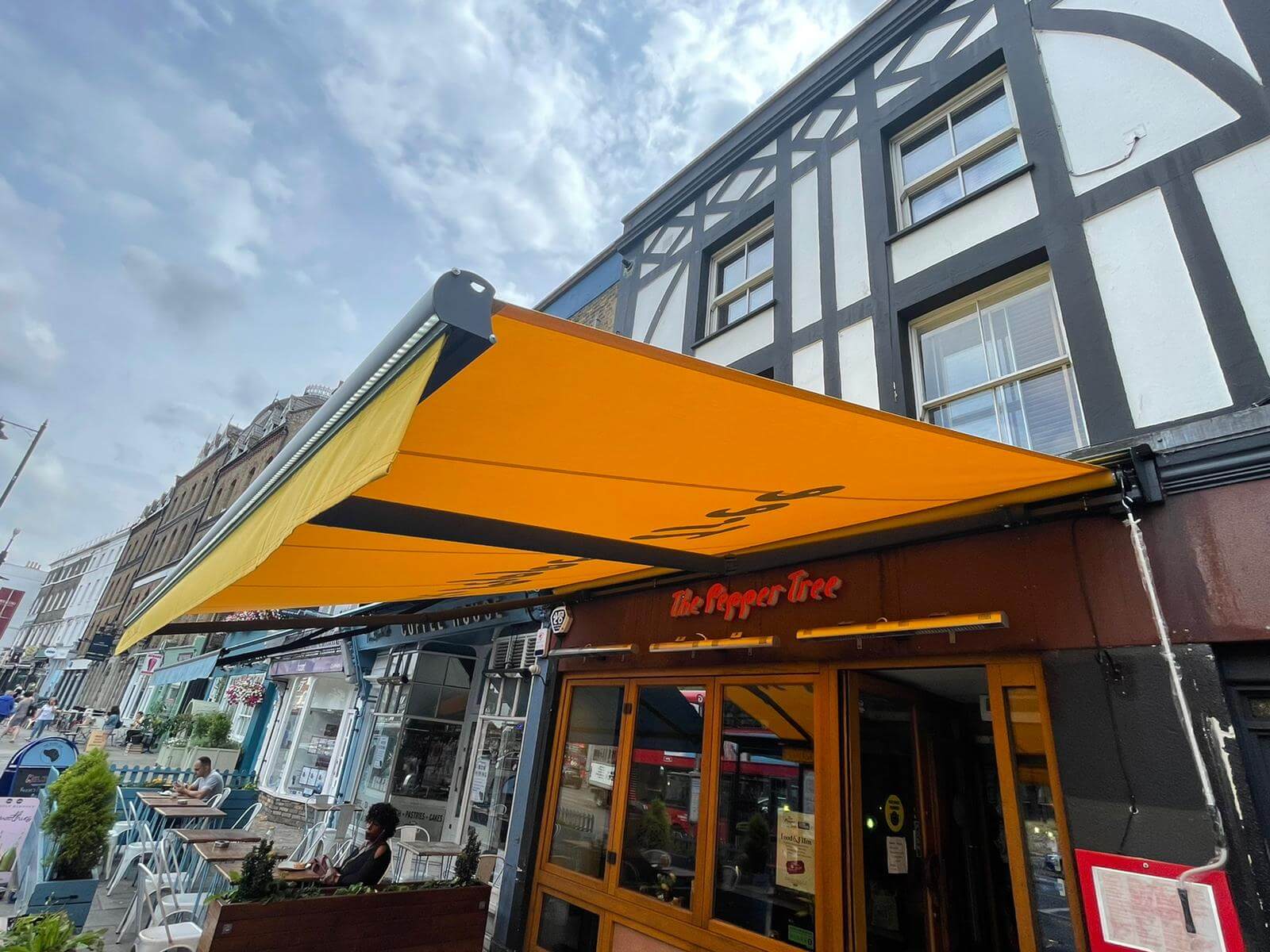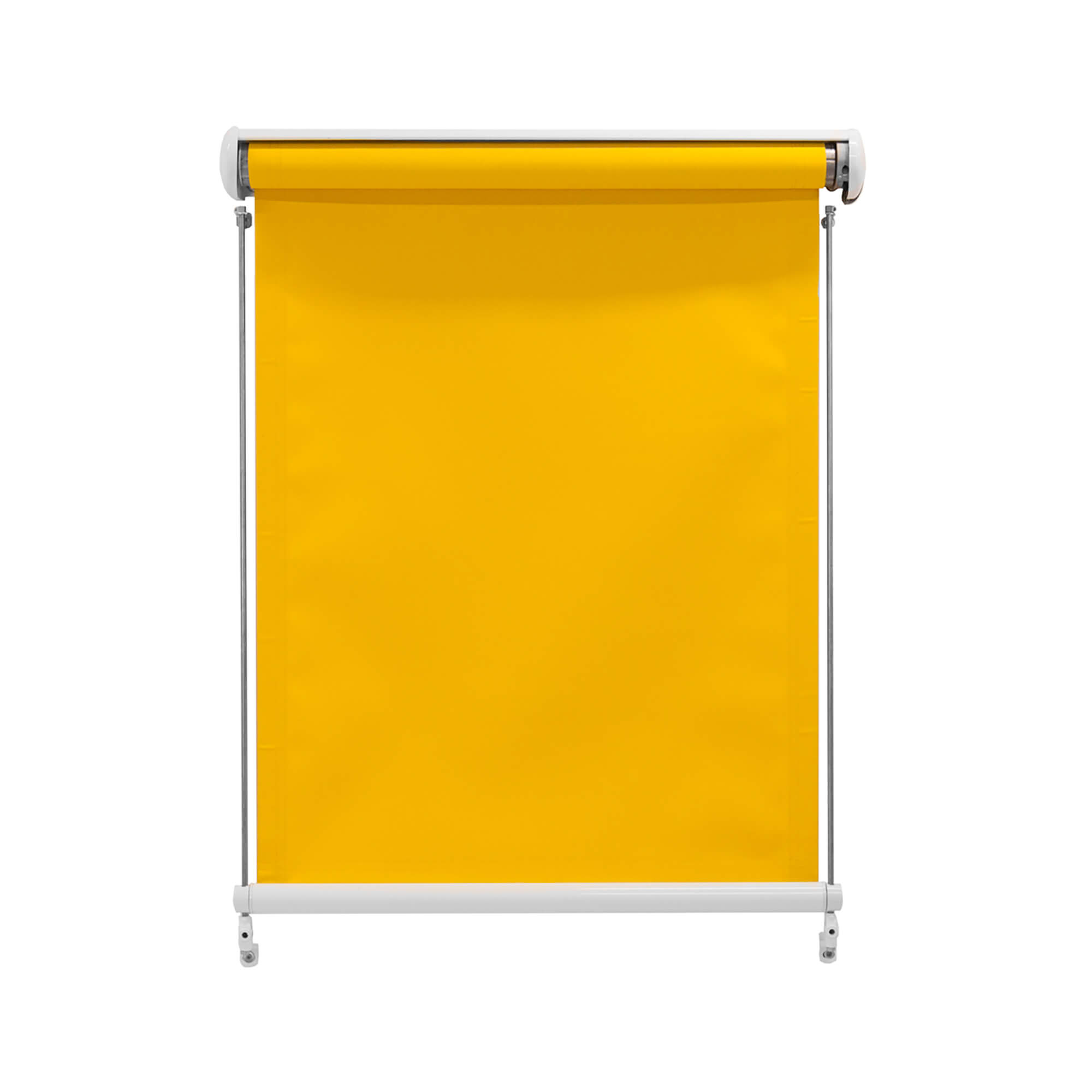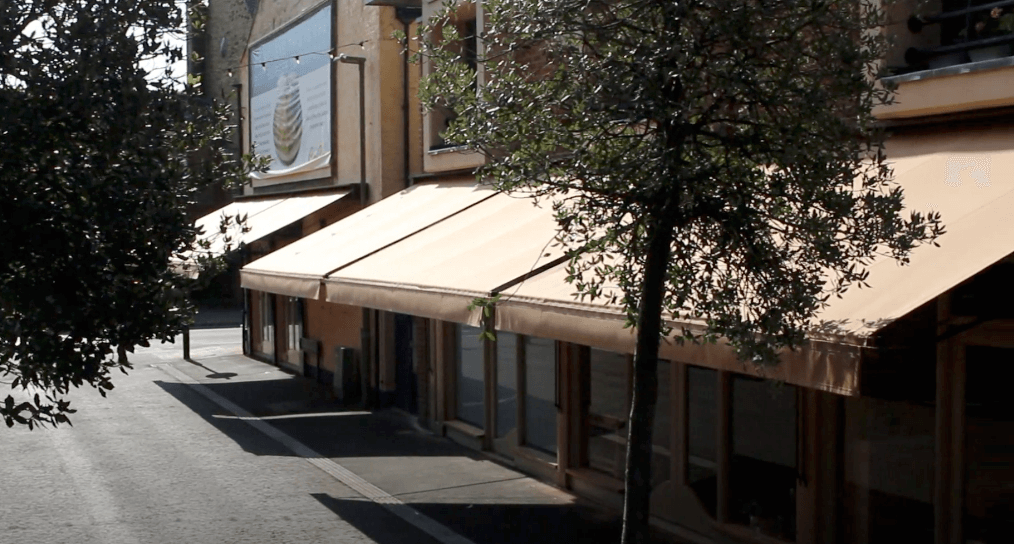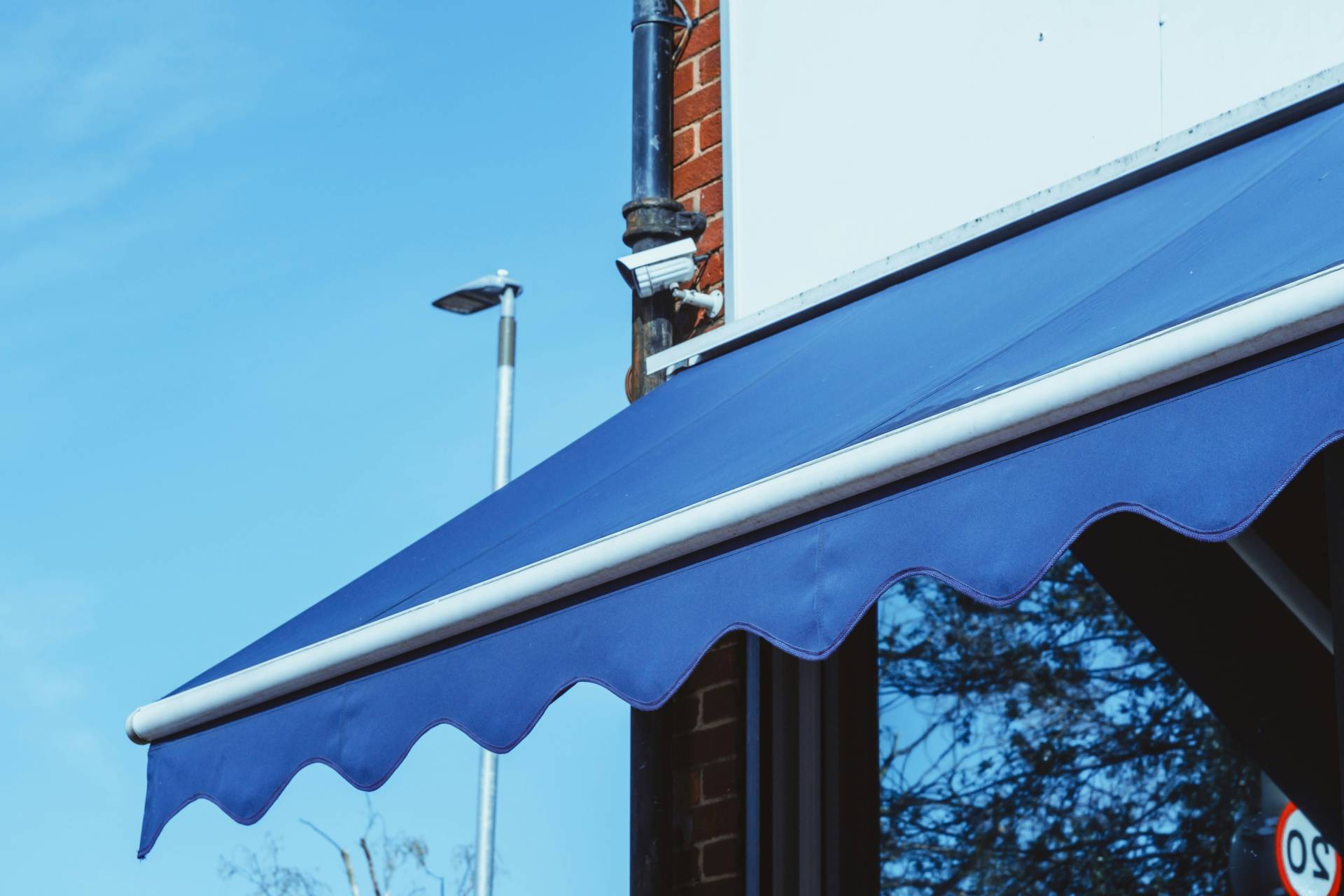Awnings are highly customisable and come in a variety of materials, designs, styles, and sizes. Widely deployed in both domestic and commercial settings for several decades, iterative changes and updates to designs and features have continuously made awnings relevant.
The availability of so many choices often makes it hard for homeowners to make a decision. What are the different awning materials? What are their pros and cons? Which awning fabric replacement is best for my property? This blog post will help you answer all these questions.
Polyester Awnings
The most used manufactured fibre worldwide, polyester is resilient, abrasion and wrinkle-resistant, easy to clean, and weather-proof. It is also extremely flexible, so not only do awning fabrics come in various colours, but it is also easy to print high-fidelity logos on them, making them excellent for companies and stores.
There’s a reason it is the most widely used fabric in the world. It doesn’t have many downsides. Being a synthetic oil-based fabric, however, raises some environmental concerns. Though, in recent years, recyclable polyester has made its way to the market and is quickly gaining steam.
Acrylic Awnings
Having low absorbency, being resistant to mould and mildew, and being capable of withstanding UV rays all make acrylic fabric see extensive use in outdoor applications. It is an excellent awning fabric that provides ample protection from the elements all while being durable and flexible.
Acrylic fabric isn’t without its downsides, however: It is prone to piling and sensitive to heat. While its low absorbency is a great advantage when withstanding rain, it also means acrylic awning fabrics don’t absorb dyes well, meaning they come in a limited set of colours and styles.
Aside from acrylic fabric being a popular option for awnings, acrylic coating is also regularly used. Applying an acrylic coating to polyester or cotton gives it a unique sheen and additional protection against the weather. This has made acrylic awnings popular with homeowners!
Keep in mind acrylic coating and fabric aren’t made from the same fundamental materials and are only tangentially related.
Canvas Awnings
Though synonymous with drawing canvas boards today, canvas fabric is one of the oldest and most durable fabrics in the world and has seen and continues to see widespread use for making sails, backpacks, tents, and yes, awning fabrics.
Canvas moreso refers to the style of weaving the fabric rather than the materials used, and this is why we have several types of canvas fabric:
- Cotton Canvas Fabric
historically the most common type of canvas fabric, cotton is flexible, durable, and easy to stretch. It has seen widespread use as rugs, clothes and bedding. However, due to its low availability and stretchability, it isn’t the best awning fabric.
- Polyester Canvas Fabric
With the invention of polyester in the 20th century, it quickly took over cotton as the most commonly used material to produce canvas fabric. It isn’t as flexible as cotton, but its lack of stretchability and affordability make it a great choice for many applications.
- Polyester-cotton Canvas Fabric
Though they certainly exist, it is rare to find canvas fabric made 100% from polyester or cotton on the market. Rather, widely available canvas fabrics feature varying mixes of polyester and cotton to offer the best of both worlds. Poly-cotton canvas awnings have the flexibility of cotton and the affordability of polyester.
Vinyl Awnings
Though associated with construction work, not only is vinyl (PVC) commonly used to produce textiles, but vinyl fabrics are popular for their excellent protection from UV rays, durability, and reliability. They are commonly used in awnings, boats, and other outdoor applications.
There are many advantages to going with vinyl awnings: They’re easy to clean, affordable, and long-lasting. You even have a large selection of vinyl fabrics to choose from, so you can find one that perfectly suits your property.
This diversity is also its greatest downside. Unlike cotton, which is a natural material, there’s no universal agreement on how vinyl fabrics should be produced. So, the actual quality of vinyl awnings varies significantly depending on the manufacturer. You have vinyl awnings that are great and embody all the advantages of vinyl and ones that feel cheap, are tough to repair, and crack in mere months to years.
Metal Awnings
Relatively out of vogue today, metal awnings were once very popular and a feature of domestic and commercial properties in the UK. Metal awnings don’t feature a piece of fabric, rather, they’re entirely built from metal, usually either steel or aluminium.
Unsurprisingly, metal awnings are second to none in durability and longevity. They provide black-out shading, which is great during the summer months. They can also be engraved and embroiled, which opens a lot of design space to make the awning look unique.
All these benefits come with severe limitations. You have no control over shading, your choices of designs and features are heavily restricted (e.g. you can’t have retractable metal awnings), and your awning might be susceptible to rusting and corrosion.
Fibreglass Awnings
Fibreglass awnings, featuring glass panes, are unique in the sense that while they are technically awnings, they provide little of the practical applications of awnings. They don’t offer adequate shading, aren’t retractable, and can’t be deployed anywhere. They, however, do shelter the space from wind and rain.
Fibreglass awnings are for home and business owners who are more after the unique aesthetics of awnings. Being translucent and letting light in makes fibreglass awnings a great set piece in high-end gardens and commercial buildings. However, being inflexible and expensive limits their use.





